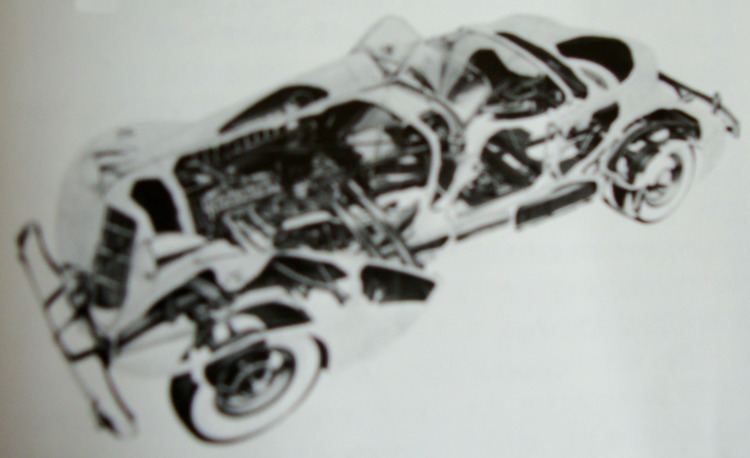 | ||
The Auburn Speedster was an American car, manufactured by the Auburn Automobile Company of Auburn, Indiana. The Auburn 851 Speedster of 1935 was styled by designer Gordon Buehrig, who also was responsible for the Cord Model 810.
Contents
History
In 1924 Auburn output was down to six cars a day. Errett Lobban Cord - a car salesman - took over the lacklustre company, and brought in James Crawford to design a new range.
The first Auburn eight was launched in 1925, and renamed the 8-88 in 1926 with a 4.8-litre side-valve 68 bhp Lycoming engine. That remained in use until 1930, when it developed 115 bhp, hence the 'Speedster 115' model name. The rest of the car was straightforward. Suspension was by semi-elliptic springs all round, and after experiments with hydraulic brakes, Auburn opted for mechanical brakes. The three-speed gearbox was in unit with the engine. The impressive open two-seater body styled by Count Alexis de Sakhnoffsky featured a boat-tail and a vee windscreen. The '115' became the '125' in 1930, with a 'cabin speedster' among the models, advertised as a "racing car with comfort of a closed car" with a 125 bhp version of the Lycoming eight giving it a claimed top speed of over 100 mph. A V12 range, using a 6.4-litre engine designed by George Kublin and built by Lycoming, was a failure, and 1934 marked its demise. Yet Auburn was to enjoy a memorable final fling with the '851 speedster'. This was introduced in 1931 with masterly bodywork by Gordon Buehrig that was ingeniously and cheaply built. The car was simple enough. The flat-head eight was strong, reliable and it was not overly stressed. Those sweeping lines concealed some interesting technical features such as the Columbia dual-ratio rear axle that was achieved by interposing an epicyclic gear train between the axle and the crown wheel. When it was engaged, the final drive ratio became a 'fast' 4.5:1. It was disengaged by moving a steering-wheel mounted lever and dipping the clutch, whereupon the ratio became a more leisurely 3:1. The three-speed synchromesh gearbox along with that dual ratio axle gave a six-speed transmission. In 1936 came the 852, identical to the earlier models with the exception of the '852' on its radiator grille. The end however, was not far off, and Auburn ceased car production in 1937. the auburn speedster can go up to 100 miles per hour for up to 12 hours
